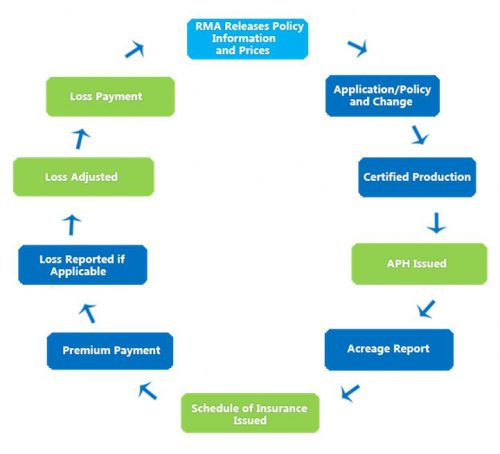
Congress first authorized federal crop insurance in the 1930s along with other strategies to help agriculture recover from the combined effects of the Great Depression and the Dust Bowl. It was in 1938 that the Federal Crop Insurance Corporation (FCIC) was created to carry out the program – a program that was started as an experiment covering only major crops in the main producing areas. This “experiment” existed for 42 years until the passage of the Federal Crop Insurance ACT of 1980.
The crop insurance experiment was strictly a government program prior to 1980, and then private insurance companies became involved, eventually becoming the sole providers of crop insurance to the American farmer by 1998.
So what are some important strengths that make crop insurance what it is today? This key component to agriculture makes certain America’s farmers and ranchers are world leaders and it is essential to the great success of our country’s agricultural economy. Here are some strengths to our modern day crop insurance:
-
Producers can use crop insurance as collateral for loans. The program is fiscally sound, and has never required a government bailout.
-
Producers design their own risk management plans and develop a crop insurance plan that mitigates those risks and is affordable. They are also required by the policy to meet the standards of “good farming practices” in order to be eligible for payments when incurring losses.
-
Crop insurance provides farmers with the income needed to settle forward contracts, or futures and options positions.
-
Crop insurance payments are paid close to the timeframe when loss occurs. Most crop insurance claims are paid within 30 days after settlement.
-
There are no income caps to buy crop insurance, and crop insurance premium subsidies and indemnities are not limited.
-
Producers must contribute financially in order to receive crop insurance.
-
There are 17 private sector companies that deliver the crop insurance program, and agents are continuously trained regarding the ever-changing complexities of the program.
-
Crop insurance products can be quickly adjusted to the changing needs of producers.
By 2015, more than 298 million acres of farmland were protected through the Federal Crop Insurance Program, and the 17 AIPs (Approved Insurance Providers) issued more than 1.2 million policies. You can see how crop insurance impacted your state by visiting: http://www.cropinsuranceinamerica.org/about-crop-insurance/facts-figures/
This vital coverage is something that comes up every year for farmers and ranchers, and is defined by the Crop Insurance Cycle – a timetable that the RMA (Risk Management Agency) and insurance industry follow. The cycle begins when RMA releases information about insurance products for the next crop year, and ends with changes to the program for the following year. In 2014, the Farm Bill strengthened crop insurance by adding several new products and options, and by making it more affordable for beginning farmers and ranchers. Don’t forget to consider this added security as you start a new season.
-Terry Olson, Titan Machinery
Resources
www.cropinsuranceinamerica.org/about-crop-insurance/
https://www3.rma.usda.gov/tools/agents/companies/indexCI.cfm
https://www.usda.gov/topics/farming/crop-and-livestock-insurance